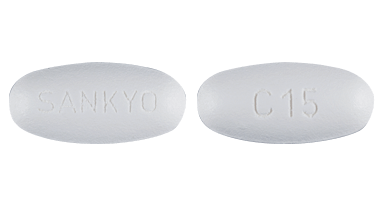

#Azor side effects professional#
When you are taking this medicine, it is especially important that your healthcare professional know if you are taking any of the medicines listed below. In these cases, your doctor may want to change the dose, or other precautions may be necessary. Drug InteractionsĪlthough certain medicines should not be used together at all, in other cases two different medicines may be used together even if an interaction might occur. Weigh the potential benefits against the potential risks before taking this medication while breastfeeding. There are no adequate studies in women for determining infant risk when using this medication during breastfeeding. However, elderly patients may need a lower dose of this medicine. GeriatricĪppropriate studies performed to date have not demonstrated geriatric-specific problems that would limit the usefulness of amlodipine and olmesartan combination in the elderly. Safety and efficacy have not been established. For non-prescription products, read the label or package ingredients carefully.Īppropriate studies have not been performed on the relationship of age to the effects of amlodipine and olmesartan combination in the pediatric population.

Also tell your health care professional if you have any other types of allergies, such as to foods, dyes, preservatives, or animals. Tell your doctor if you have ever had any unusual or allergic reaction to this medicine or any other medicines. For this medicine, the following should be considered: Allergies This is a decision you and your doctor will make. In deciding to use a medicine, the risks of taking the medicine must be weighed against the good it will do. This product is available in the following dosage forms: This medicine is available only with your doctor's prescription. This lowers the blood pressure and increases the supply of blood and oxygen to the heart. As a result, olmesartan relaxes blood vessels. It works by blocking a substance in the body that causes the blood vessels to tighten.

Olmesartan is an angiotensin II receptor blocker (ARB). As a result, amlodipine relaxes the blood vessels and increases the supply of blood and oxygen to the heart while reducing its workload. It affects the movement of calcium into the cells of the heart and blood vessels. Information is for End User's use only and may not be sold, redistributed or otherwise used for commercial purposes.Amlodipine is a calcium channel blocker (CCB). Portions of this document last updated: June 01, 2022Ĭopyright © 2022 IBM Watson Health. You may report side effects to the FDA at 1-80. If you notice any other effects, check with your healthcare professional.Ĭall your doctor for medical advice about side effects. Other side effects not listed may also occur in some patients. Redness of the face, neck, arms, and occasionally, upper chest Check with your health care professional if any of the following side effects continue or are bothersome or if you have any questions about them: Less common Also, your health care professional may be able to tell you about ways to prevent or reduce some of these side effects. These side effects may go away during treatment as your body adjusts to the medicine. Some side effects may occur that usually do not need medical attention. Large, hive-like swelling on the face, eyelids, lips, tongue, throat, hands, legs, feet, or sex organs Check with your doctor immediately if any of the following side effects occur: More commonīloating or swelling of the face, arms, hands, lower legs, or feetįast, irregular, pounding, or racing heartbeat or pulse


 0 kommentar(er)
0 kommentar(er)
